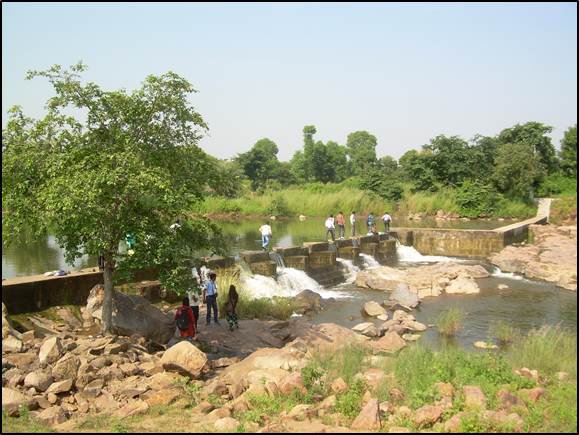|
The Importance
of Information in
W hen the term climate adaptation is mentioned, one may envision the construction of seawalls in coastal communities to protect against rising sea levels, the use of alternative, drought-resistant crop varieties by farmers to reduce the impact of more volatile rain patterns, or the enhancement of public health efforts to address a likely increase in the incidence of vector borne diseases such as malaria and dengue fever due to warming temperatures.
As communities and policymakers make decisions regarding the future of their respective homes and constituencies, information on the potential impacts of climate change, the populations most vulnerable to these impacts, and the capacities of these populations to adapt to these impacts will be vital for effective development planning and climate adaptation interventions. At the international and national level, the role of information in aiding climate adaptation efforts is garnering considerable attention. For example, the synthesis of all climate change related information and the development of climate change vulnerability assessments have been emphasised in the United Nations Framework Convention on Climate Change guidelines for the development of National Adaptation Programs of Action (NAPA). 1 In India, the National Action Plan on Climate Change includes a National Mission on Strategic Knowledge for Climate Change, which calls for increased research in climate change related fields, the enhancement of access and availability of relevant data, and strengthening vital data collection mechanisms and systems. These examples underscore the emerging but wide-ranging view that information is the key to an effective response to climate change.Information on Climate Change At the ground level, Development Alternatives (DA) has been working on increasing and enhancing the use of robust climate change information in planning and decision making. In a recent publication released in collaboration with the World Resources Institute (WRI), DA presented a model case study that documents their findings and resulting knowledge from two projects in Bundelkhand that focused on ‘accessing, processing, and applying climate information to help farming communities take robust and low-risk agricultural adaptation measures’. 2 The two projects, Sustainable Civil Society Initiatives to Combat Climate Change and a Vulnerability Assessment and Adaptation Planning for Madhya Pradesh brought together a multidisciplinary team of experts in the fields of agriculture, climate change, social science and communications to analyse, integrate and communicate a wide range of information in order to help address the long-term environmental sustainability of agriculture in Bundelkhand. The projects made the use of satellite imagery and climatic, hydrological, biophysical, socioeconomic, and stakeholder data and information to understand the potential physical impacts of climate change in the area, the current patterns of land use and the state of development in the region. The imagery also helped simulate potential climate change impacts on crop productivity and assess the various vulnerabilities and adaptive capacities. The findings and knowledge emanating from the collation, integration and analysis of this information was shared with relevant stakeholders including farmers, local government research institutions and civil society organisations.Development Alternatives’ field-based agricultural extension team worked with 280 farming families in 20 villages to help disseminate climate change related information and encourage the adoption of climate resilient adaptation techniques. Through the dual projects, the 280+ farmers ‘adopted adaptation measures such as sprinkler- and drip-based irrigation, drought-tolerant crop varieties, rainwater conservation through the construction of small-scale structures like storage tanks, and raised-bed sowing as a direct result of the information communicated by the project[s]’ 3. Through their work in the field, the DA team found direct evidence of the importance of clear and robust information in adapting to climate change. Through effectively communicating climate projection information to farmers indicating that droughts are likely to keep reoccurring and may even increase in the future, the team found that farmers were much more inclined to adopt water conservation measures such as switching from using flood irrigation techniques to sprinkler-based irrigation systems or using drought-tolerant crop varieties. qNick Martin Endnotes 1 Dinshaw, A., Dixit, A. and McGray, H. (2012). Information for Climate Change Adaptation: Lessons and Needs in South Asia. Working Paper. World Resources Institute, Washington DC. Available online at http://www.wri.org/publication/climate-change-adaptationlessons-south-asia. 2 Khan, M. A., Kumar, A.and Lakshmi, K. V. (2012). Applying Information for Adapting the Agricultural Sector in Bundelkhand, India. World Resources Institute, Washington, DC. Available online at http://www.wri.org/publication/applying-information-for-adapting-agriculture-bundelkhand-india. 3 Ibid. |